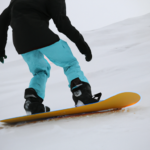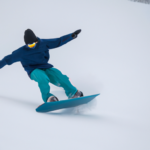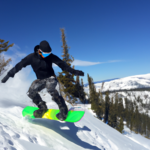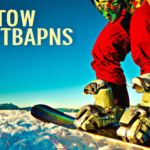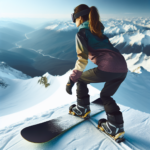Think about the first time you stepped on a snowboard. Your heart raced as you picked up speed, carving your way down the mountain. But what if you could mix it up, challenge yourself, and add another exciting facet to your boarding skills? In this article, you’ll find a definitive guide on how to ride switch on a snowboard. We’ll break down everything from stance adjustment to linking turns, helping you unlock this impressive and fun snowboarding technique. You will learn how riding in an unconventional direction can bring a whole new dimension to your time on the slopes!
Understanding Switch Riding
What is switch riding?
Switch riding in snowboarding is the ability to change and ride in the opposite direction to your natural stance. It’s like writing with your non-dominant hand. If you’re naturally inclined to lead with your left foot forward (regular stance), switch riding would mean going down the hill with your right foot forward, and vice-versa for those with a natural goofy stance. It’s essentially the act of snowboarding in your non-dominant direction.
Why is switch riding important in snowboarding?
Switch riding is important because it opens up a new dimension in your snowboarding skills. It helps you better navigate any landscape and enhances your ability to land tricks in either direction. Additionally, it improves your overall balance and agility on the board, making you a more versatile and skilled snowboarder. Whether you’re interested in freestyle, freeride, or even just casual riding, mastering switch riding can significantly boost your performance.
The challenge of switch riding
Learning to ride switch can initially feel awkward and challenging. Your body might resist the unfamiliar stance, and achieving the same level of confidence and fluidity you enjoy in your natural stance might take some time. It’s a process that requires patience and perseverance, as it’s about retraining your muscle memory and entire approach to snowboarding.
Preparing for Switch Riding
Equipment check
Before starting to practice switch riding, make sure your equipment is up to the task. Your snowboard should have a “true twin” or “directional twin” shape as these are designed to allow equal performance in either direction. The bindings should also be in a duck stance, which means both feet are angled outward to allow easier transition between normal and switch riding.
Warm-up exercises
Warming up before trying switch riding is crucial for prevent injuries and getting your muscles ready for a new challenge. Include dynamic stretches like leg swings, arm circles, and hip circles. Work on your core stability and engage muscles that you would use while riding, like the hamstrings, quadriceps, and glutes.
Mental preparation
Switch riding is as much a mental exercise as it is physical. Prepare yourself to be patient and open-minded. Remember that learning something new takes time, so don’t feel discouraged if you don’t get it right away. Visualize yourself successfully riding switch, as this can serve as a powerful motivator and confidence booster.
Basic Techniques for Switch Riding
Proper body positioning
To successfully perform switch riding, focus on maintaining a balanced and symmetrical body position. Your knees should be slightly bent and your body weight should be evenly spread between both feet. Keep your shoulders aligned with your snowboard and your eyes looking in the direction you want to go.
Balance and weight distribution
Balance and weight distribution are crucial when riding switch. Too much weight on your back foot might make your board’s tail sink, while leaning excessively on your front foot could send you tumbling forward. Strive to evenly distribute your weight between your front and back foot, with a slight lean forward to help with propulsion.
Using the edges
Mastering edge control while riding switch is a major milestone. Use your snowboard’s edges to carve your path. Start with gentle serrated turns on a flat terrain, gradually transitioning into larger sweeping carves as you gain confidence. The key is to combine proper body positioning, balance, and knee bending as you shift from one edge to the other.
Mastering the Switch Stance
Stance width
Having the right stance width is important in switch riding. A stance that is too wide may hinder your mobility while a stance that is too narrow can affect your balance. The optimal stance width is typically about shoulder-width apart, but it can be slightly adjusted for personal comfort and preference.
Foot orientation
Foot orientation plays a critical role in a successful switch ride. Most snowboarders ride with a duck stance, where both feet point outward, as it lends itself well to riding in both directions. When you switch, your back foot becomes your front foot, but the orientation remains symmetrical, making the transition smoother.
Weight distribution in switch stance
A common mistake beginners make while switch riding is leaning back too much. Ideally, your weight should be slightly more on your front foot. This helps control your board’s direction and makes it easier to initiate turns.
Switch Riding on Flat Terrain
Getting started with switch riding
Starting with flat terrain is a safe way to habituate your body to the switch stance. Get comfortable with sliding back and forth while maintaining balance and control in your new stance. Practice strapping in and out, and try moving in a straight line before attempting turns.
Controlling speed
It’s important to learn how to control your speed while riding switch. To slow down, press down on your snowboard’s edges, creating friction. Remember to engage your ankles and knees for success.
Turning and carving while riding switch
Turning and carving with a switch stance can be challenging at first. The key is to initiate the turn by shifting your weight to the front foot and steering with your shoulders and hips. It’s important to continue looking in the direction you wish to go.
Handling Slopes in Switch Riding
Approaching the slope
Approaching slopes while riding switch can seem daunting initially. Start with a gentle slope and navigate in a zigzag pattern, using your edges to control your speed while descending.
Body positioning for downhill
Maintaining the correct body positioning while going downhill is crucial- keep your body perpendicular to the slope, not to the flat ground. This may require you to lean forward more than you expect, but it helps keep your balance and control.
Managing speed while going downhill
Managing speed while going downhill switch can be challenging. Use the ‘falling leaf’ technique, moving from side to side and using the edge of your board to control your speed.
Switch Riding on Steeper Terrain
Adjusting the stance for steep terrain
As you move onto steeper terrains while riding switch, it’s important to adjust your stance. You may have to lean further forward than usual, and it’s essential to keep your knees bent to absorb bumps and turns better.
Modifying turning technique
On steeper slopes, you might have to adjust your turning technique. Instead of just tilting your board onto its edges, use more of a pivoting motion. This allows you to make quicker, sharper turns, which are often necessary on steep slopes.
Managing fear and maintaining control
Steep terrains can be intimidating but managing your fear is crucial for successful switch riding. Start slow, stay focused, and maintain control over your speed and direction.
Practising Switch Riding
Setting practice goals
Setting achievable goals can be motivating and can guide your practice sessions. Maybe you want to manage to carve a full turn in the switch stance, or ride switch down an entire slope. Having clear objectives will make your progression more noticeable.
Regular practice routines
Incorporating switch riding into your regular snowboarding sessions can help hasten your progress. A good practice is to dedicate a portion of each day’s ride to switch riding.
Dealing with common mistakes
Switch riding is trickier than it seems, and it is quite common to make some mistakes along the way. Instead of getting frustrated, learn from them. By doing so, you’ll transform those initial missteps into stepping stones towards mastering switch riding.
Progressing with Switch Riding
Improving carving techniques
As you get more comfortable with switch riding, begin to challenge yourself with more complex carving techniques. Try making sharper turns, moving at higher speeds, or even carving on steeper slopes.
Learning advanced switch tricks
Once you’ve mastered basic switch riding, it’s time to learn some tricks! Start small with 180s or simple jumps, then gradually work your way up to more advanced manoeuvres.
Building endurance for long switch runs
Switch riding can be physically demanding, and thus building endurance is important. Continual practice will help you increase your stamina, allowing you to maintain your switch stance for longer runs.
Safety Tips for Switch Riding
Helmets and protective gear
Safety should never take a backseat. Always wear a helmet while snowboarding, especially when trying something new like switch riding. Consider protective gear like wrist guards, knee pads, and padded shorts to minimize the risk of injury.
Safe falling techniques
Falling is part of the learning process, and learning how to fall safely can prevent injuries. If you feel yourself losing balance, try to go with the fall rather than fight against it. Protect your head and try to land on your forearms or thighs rather than your wrists or tailbone.
Knowing when to rest and hydrate
Listen to your body. Switch riding can be exhausting, so be sure to rest when you feel tired and hydrate regularly to keep your energy levels up. This is important not only for maintaining your stamina, but also for preventing injuries.
Switch riding is an excellent way to enhance your snowboarding skills and enjoy the sport in a new way. With patience, practice, and the tips provided in this article, you’ll find yourself mastering switch riding in no time.
- What Snowboard Bindings Should I Get? - January 23, 2024
- What Size Screws For Snowboard Bindings? - January 23, 2024
- How To Snowmobile On Water? - January 23, 2024

